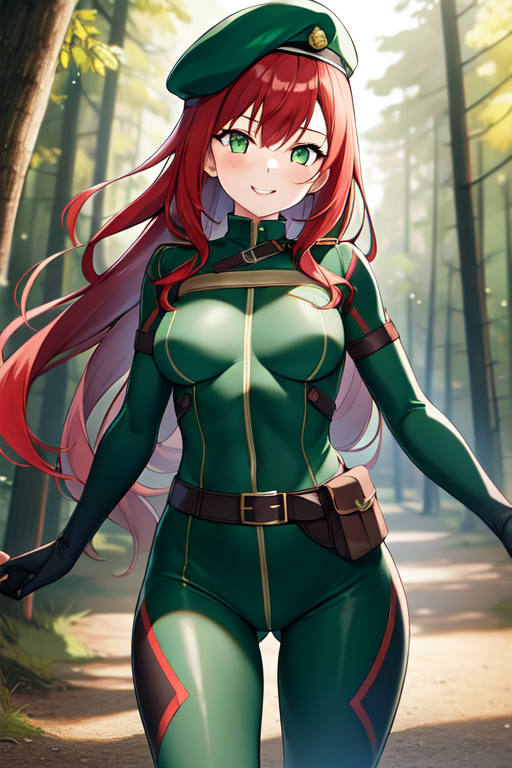

***
[This article was originally posted on my Substack.]

This article was inspired by a conversation I recently had with some of my internet friends. I’m going to assume the readers are already familiar with A.I. art generation, so I won’t bore them by describing what it is or giving a detailed history of its development. I am only going to give my opinion on it.
When I first heard about A.I. art generation over a year ago, I thought it was an amusing novelty, but when I learned that it could also generate anime girls, I immediately joined in the fun. I confess that I have generated too many anime girls to count. The image at the top of this article is just one of my many creations. Eventually, the novelty wore off, thus allowing me to view it more objectively.
Many artists fear that A.I. art will destroy their livelihoods, but after using those tools for over a year, I can confidently say that they can put their fears to rest. First of all, it’s ridiculously easy to identify A.I. art. The mangled hands are a dead giveaway. They also tend to have a homogeneous art style. Sure, one can implement different styles through the use of LoRAs, but that still can’t get rid of the uncanny valley quality that is present in A.I. images. They look fine at first, but upon closer inspection, certain anomalies can be spotted. Take the image I posted as an example. Ignoring the hands, other flaws reveal themselves. The lighting makes no sense, the trees don’t look right, the dirt doesn’t match the style of the girl, and one of the trees disappears into the girl’s hair.
One of the most important points is that A.I. is incapable of true originality. It can only work with what already exists. I noticed this when generating my own images. The A.I. was working off a template. When I included a prompt such as “black hair,” it always gave me the same style of black hair with almost no variation. It also can’t figure out where to put certain elements such as bows or ribbons. Furthermore, it can’t do anything extremely specific or novel. Whenever I try to generate a certain pose, I get extra limbs or broken backs. At that point I’m better off commissioning an artist to draw the pose for me.
It’s for these reasons and more that A.I. art will never replace human artists, but I do see one possible use for it: references. Let’s say I want a bodysuit design but I’m having a hard time coming up with one. I’ll use A.I. to generate several designs. I can then pick the best one and commission an artist to draw it in his style. Speaking of which, human artists will become more prestigious for that reason. A.I. art is cheap (usually free), so over time, people will start seeing it as low status. This will be most evident with book covers. An indie author can A.I. generate a cover at no cost, but if they truly wish to stand out, then they will commission a human artist.
In conclusion, support your artist friends, for their creativity and unique touch can never be replicated by a machine.
***
(This web page was proudly made with free and open source software.)